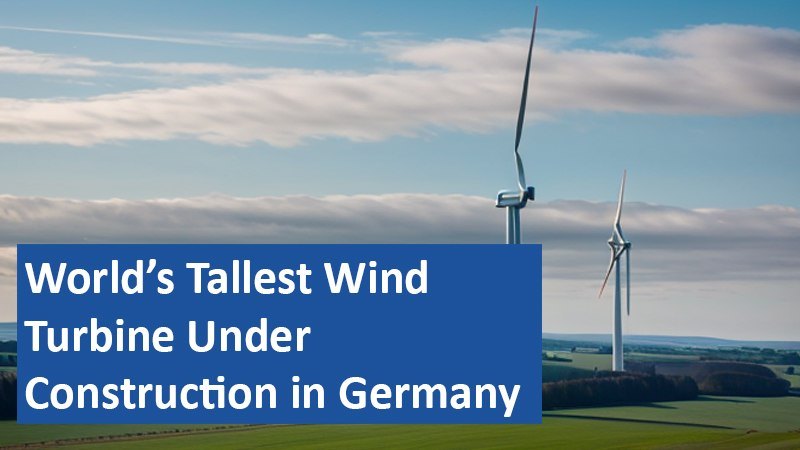A groundbreaking wind turbine, set to be the tallest in the world, is currently being built in Germany. Developed by a Dresden-based company, this massive structure is expected to be operational by 2025. Its height and innovative design promise significant advancements in renewable energy production.
By Sadie Watkins
A Record-Breaking Wind Power Project

In the town of Schipkau, located in the Lausitz region of Brandenburg, the foundation for the world’s tallest wind turbine was recently laid. The turbine’s hub will stand 984 feet above the ground, and its blades will stretch over 328 feet in length. With a potential total height of 1,312 feet, this turbine will surpass any currently operational wind turbines. Due to its impressive height, it can harness 40% more wind energy, potentially doubling power output without requiring a larger rotor diameter.
Harnessing Higher Winds
Wind conditions at such altitudes are significantly more favorable, as demonstrated by a year-long study involving a 984-foot-tall measuring tower. Jochen Großmann, founder of Gicon, the company behind this project, explained that winds at this height not only have higher average speeds but are also more consistent. This will result in more hours of full-capacity operation, similar to what is seen with offshore wind farms, but with the cost benefits of land-based construction and maintenance.
Innovative Engineering for New Heights
The turbine’s unique design, inspired by an earlier concept from Leipzig engineer Horst Bendix, replaces the traditional tower with a multi-leg structure. Gicon’s design, however, deviates from Bendix’s original by incorporating a four-legged framework and placing the generators at the hub instead of at ground level. This new design allows the turbine to extend to its full height and efficiently transfer energy, breaking new ground in wind energy technology.
A Community-Backed Initiative
Unlike many wind power projects, the construction of this turbine has encountered little opposition from local residents. Gicon’s proactive approach to community engagement, which included keeping locals informed from the outset, has been credited for the public’s acceptance. Additionally, the new turbine will be built between existing wind farms, requiring no extra land. According to Großmann, the design ensures that the new turbine’s rotor blades will not interfere with neighboring wind turbines.
This project highlights significant advancements in wind energy technology with its innovative design and record-breaking height. By harnessing higher altitude winds, it promises to increase power efficiency dramatically while maintaining cost-effectiveness. As renewable energy continues to evolve, such developments are crucial for meeting future energy demands sustainably.
Based on information from www.heise.de and own research.